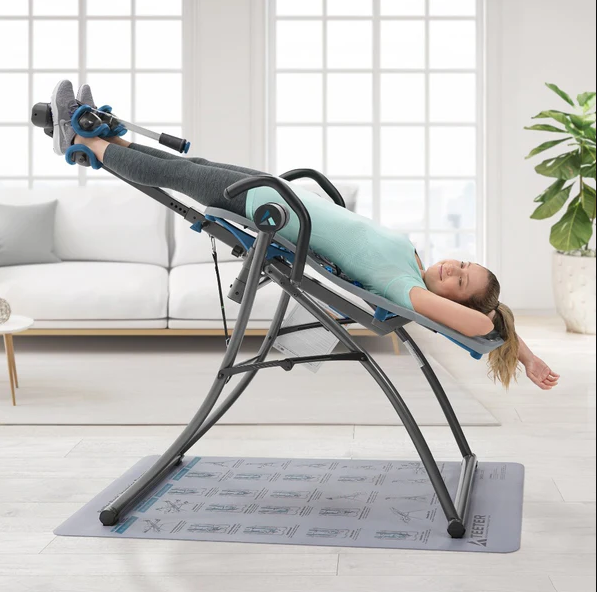How Do They Work?
Can you really ease back pain, sciatica, or kidney stones by rolling out on an upright surface with your feet in the air?

What is inversion therapy?
Spinal traction is also known as inversion therapy. The belief is that inverting your body relieves stress on the nerves and discs in your spine. It is generally used to temporarily narrow down the space between vertebrae that are pressed together.
You can use these tables to relieve:
1. Back pain
2. Muscle spasms or tense muscles
3. Compressed spinal disks
4. Sciatica pain
5. Kidney stones
Some people also use them as a general way to gently stretch joints and muscles, or just to relax.
They are not the only way to do this therapy. You can also hang upside down with your feet strapped to gravity boots attached to a railing at the doorway. Cloth yoga slings help you hang upside-down and gently return you to an upright position. You can also do yoga poses that flip you over.
Does it work?
Evidence is mixed on whether or not these tables are an effective treatment for pain.
Back pain. Some people believe that short-term pain relief is offered by low- or compressed disk pain. It is probably a non-effective long-term treatment option. Ongoing research suggests inversion therapy is no more effective than sham procedures for back pain alleviation.
Sciatica. A study in 2012 from England showed that inversion therapy combined with a type of physical therapy was an effective treatment for sciatica pain caused by a bulging disc. It can reduce the likelihood of needing back surgery.
Kidney stones. Doctors may recommend this type of physical therapy to treat painful kidney stones. Research indicates that it could help you pass stones when you do it in conjunction with diuresis. This procedure, which you have in the hospital to receive fluids so you can go, can help get rid of kidney stones. You do this complementary treatment after a shock wave helps to break up the stones.
What to expect
How do you use an inversion table? Lie face down and strap yourself in, so you can be sure you will not fall over. Then, tip over until your head is lower than your heart. You can use one under the guidance of your physical therapist or at a medical office. You may schedule a session with them, and they may show you how to use it and keep you on track.
Have someone watch you. Don't lean upside down on a table without a spotter. Ask someone to watch you down in case you get laid down.
Don’t lean back all the way. Aim to have your back around 30 degrees, or as low as 10 degrees if you're not elderly.
Buckle up. Aim to have your back around 30 degrees, or as low as 10 degrees if you're not elderly.
Do it in short spans. When you first do it, try it for 1 or 2 minutes once a day to see how you feel. Limit your inversion table sessions to 5 minutes twice a day.
Tip-up slowly. After you’ve done it, come back up slowly to an upright position. If you jerk up too quickly, you may trigger muscle spasms or disk pain in your back.
Combine it. Stretching and remaining flexible might be a good idea to keep in mind if you take part in this therapy, too. Ask your physical therapist or doctor to recommend stretches.
Possible side effects and interactions
Your heart rate slows down and increases your blood pressure as a result of inversion tables. Streams will appear dimly at the edge of your vision. Because of these effects, they're risky if you have high blood pressure, glaucoma or any other eye disease, heart disease, a history of strokes, hiatal hernia, inner ear problems, or are pregnant.
An inversion table may cause joint injuries to people who have hip or knee arthritis. It is recommended to speak to your physician prior to using one. Just be sure this kind of inversion therapy is safe for you.
Where to buy inversion tables?
Here at Pro Therapy Supplies, we offer Teeter, Jobri, Stamina, and Mastercare Inversion Tables. You may visit our website or call us at 770-441-9808 and we will be more than happy to help you!

